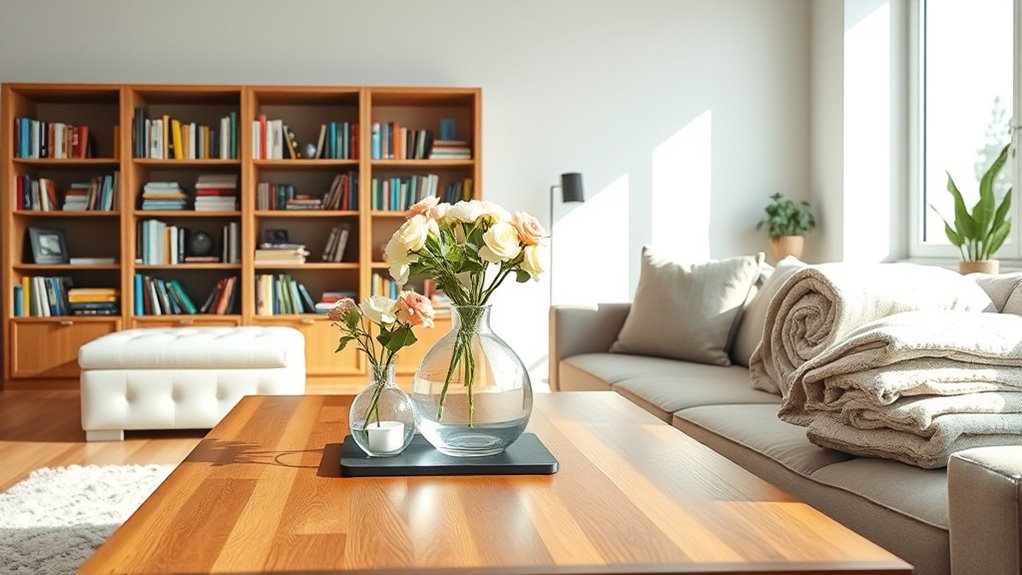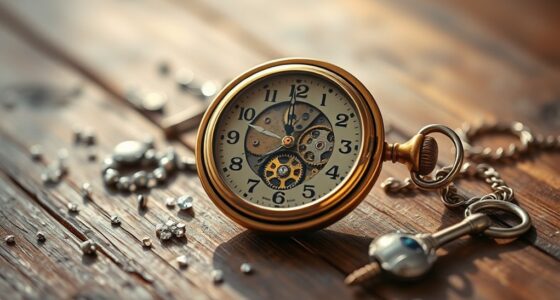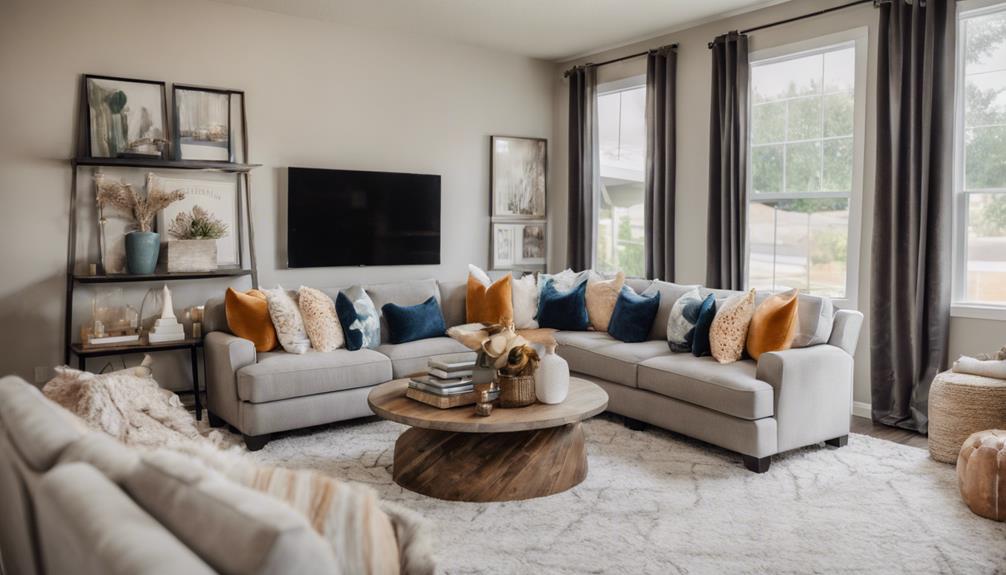Stop jumping into decluttering without a plan, and instead, set clear goals and break the process into manageable steps. Avoid holding onto old or sentimental items just because they’re familiar—ask yourself if they truly serve a purpose or bring joy. Take regular breaks to rest and recharge, don’t overwhelm yourself with multiple tasks at once, and prioritize sorting to keep your space organized. Keep these tips in mind, and you’ll discover more effective ways to transform your space.
Key Takeaways
- Avoid jumping straight into cleanup; create a clear plan with specific goals first.
- Don’t keep items solely because they are old or sentimental; evaluate their usefulness.
- Stop rushing through tasks; take regular breaks to stay focused and prevent burnout.
- Focus on one area or task at a time instead of multitasking to ensure thorough decluttering.
- Never skip the sorting step; categorize belongings into keep, donate, sell, or discard for better organization.
Avoid Jumping Into Cleanup Without a Plan
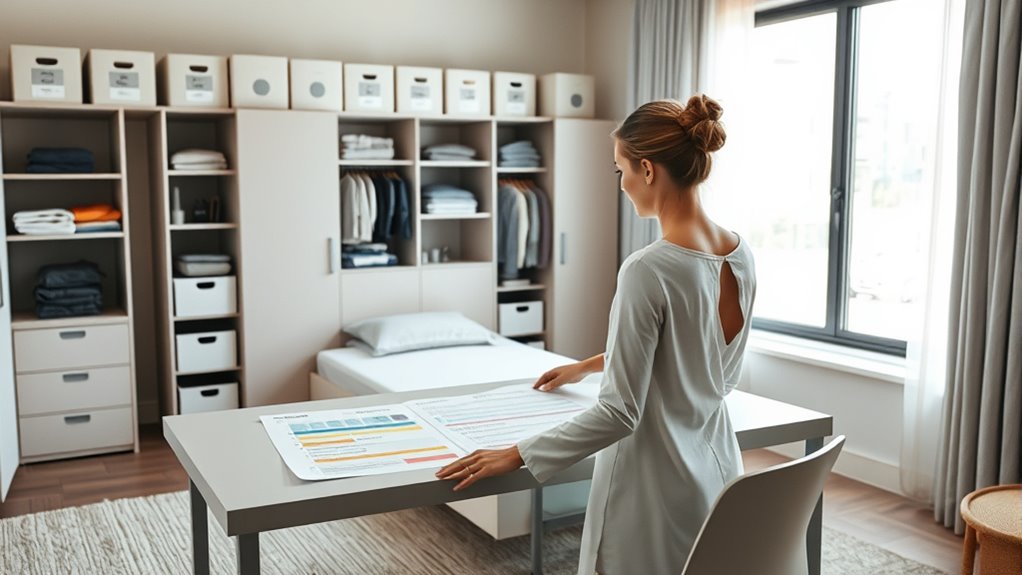
Before you start cleaning, it’s essential to have a clear plan in mind. A solid planning strategy helps you stay focused and efficient. Begin by setting specific goals for the decluttering session—deciding which areas or items need the most attention. This prevents you from wasting time on unnecessary tasks or getting overwhelmed. Break down your goals into manageable steps, like sorting papers, donating clothes, or organizing shelves. By establishing a clear goal-setting process, you’ll know exactly what to tackle first and how to measure your progress. Incorporating design principles such as layout and decor choices can make your space more inviting after decluttering. Jumping into cleanup without a plan often leads to frustration and unfinished work. Instead, take a few minutes to outline your approach, and you’ll find the process smoother and more successful.
Don’t Keep Everything Just Because It’s Old
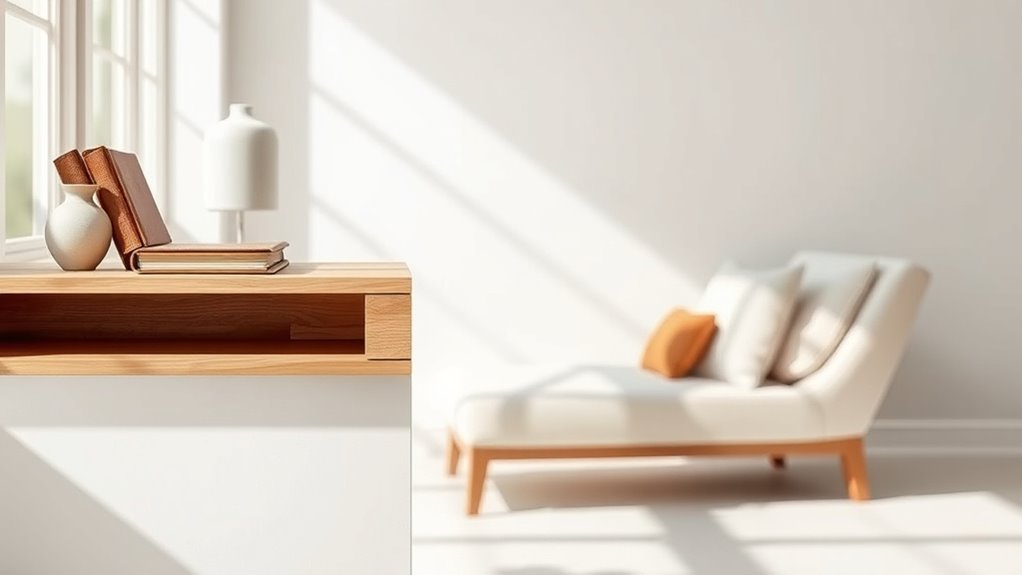
Have you ever held onto items simply because they’re old, thinking they might still be useful someday? It’s easy to fall into the trap of keeping sentimental items or unnecessary duplicates just because of their age. But holding onto everything can clutter your space and make it harder to enjoy your home. Ask yourself if you truly need that worn-out sweater or outdated gadget. If it no longer serves a purpose or sparks joy, it’s time to let it go. Remember, sentimental items should bring value or fond memories, not just be stored away indefinitely. Removing these old items creates room for what matters most and prevents your space from becoming overwhelmed with unnecessary clutter. Additionally, replacing outdated or worn-out items with newer, more efficient options like self watering plant pots can help maintain a fresh and organized environment.
Stop Rushing to Finish and Take Breaks

While decluttering, it can be tempting to rush through the process to check it off your list quickly. But rushing can lead to burnout and overlooked items. Instead, adopt a pacing strategy that includes mindful breaks. These breaks help you reset mentally and physically, keeping your focus sharp. Take a few minutes to stretch, hydrate, or breathe deeply before continuing. This approach prevents fatigue and keeps you motivated. Remember, decluttering isn’t a race; it’s about creating a more organized space with intention. By slowing down and incorporating mindful breaks, you’ll stay energized and make thoughtful decisions about what to keep or toss. Incorporating skin hydration strategies during breaks can also help maintain your energy levels. A steady pace ensures the process remains manageable and even enjoyable.
Don’t Overwhelm Yourself With Multiple Tasks
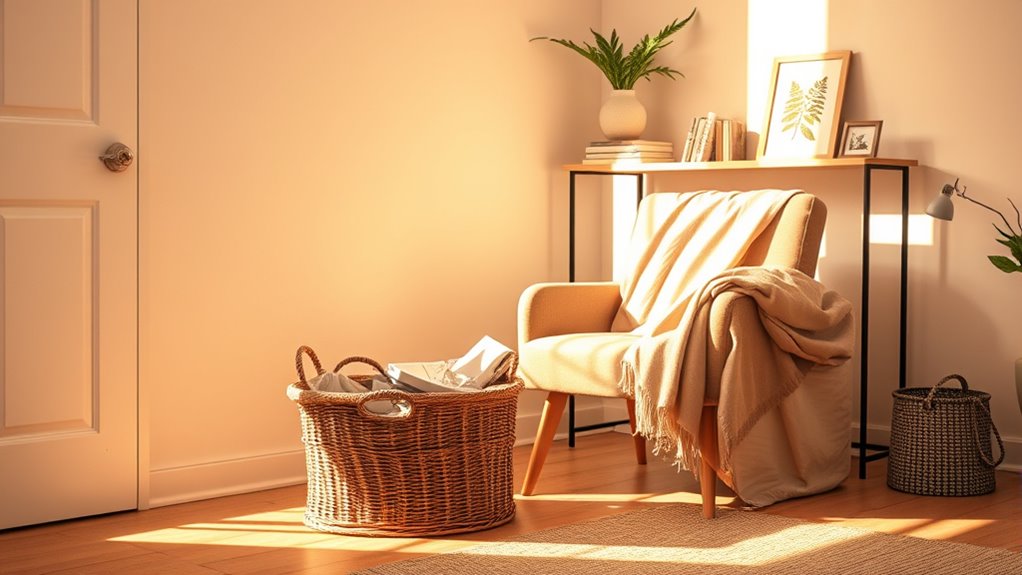
Taking on too many decluttering tasks at once can quickly become overwhelming and counterproductive. Instead, adopt a mindful approach by focusing on one area or task at a time. Set realistic goals that match your available time and energy, avoiding the temptation to do everything at once. Trying to tackle the entire room can lead to frustration and burnout. Break the process into smaller steps—perhaps sorting one drawer or shelf per session. Celebrate each small victory to stay motivated. Remember, decluttering is a gradual process, not a race. By prioritizing quality over quantity and maintaining a steady pace, you’ll make consistent progress without feeling overwhelmed or discouraged. Incorporating wall organization solutions can help create visual interest and make decluttering more manageable, encouraging ongoing order and style. This approach keeps you focused and motivated for long-term results.
Avoid Ignoring the Sorting Process
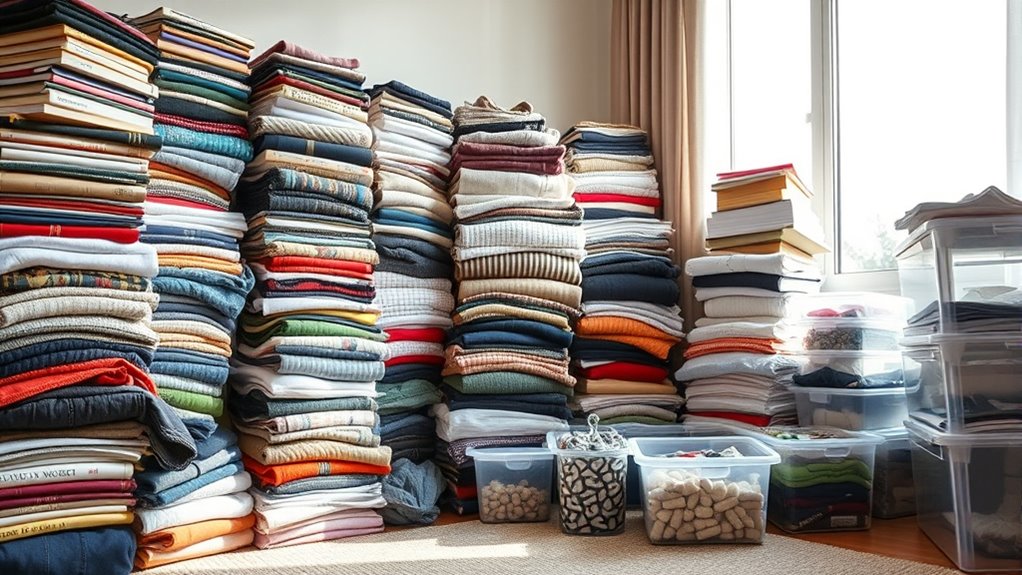
Skipping the sorting step can sabotage your decluttering efforts, leaving you with a disorganized space and unfinished tasks. Without a clear sorting strategy, you might pile items randomly or rush through decisions, making it harder to see progress. A proper decluttering mindset emphasizes sorting as a critical step, helping you categorize belongings into keep, donate, sell, or discard. Ignoring this process causes confusion and prolongs the overall task. Instead, focus on sorting thoughtfully as you go, giving each item intentional attention. This not only streamlines your decluttering but also builds momentum. Remember, a deliberate sorting strategy ensures you make better decisions, keeps you motivated, and results in a truly organized space. Incorporating efficient methods like using labeled bins or designated areas can further enhance your sorting process. Don’t skip this essential step—it’s crucial for long-lasting results.
Frequently Asked Questions
How Do I Decide What to Keep and What to Discard?
To decide what to keep and discard, consider if an item holds sentimental value or emotional attachment. If it sparks joy or meaningful memories, keep it. If not, gently let it go. Ask yourself if you’ve used it recently and if it fits your space now. Trust your gut—prioritize items that truly matter, and don’t hold onto things just out of habit or guilt.
What Are Effective Ways to Organize Items After Decluttering?
After decluttering, you should focus on organizing items efficiently. Use smart storage solutions like clear bins and drawer dividers to keep things visible and accessible. Label everything with clear labeling techniques, so you know exactly what’s inside each container or space. This approach helps maintain order and makes your space easier to tidy up in the future, ensuring your decluttering efforts last longer and feel more manageable.
How Long Should I Spend on Each Room’s Decluttering Process?
You should spend about 30 minutes to an hour per room, depending on its size. For example, Sarah dedicated two hours to her cluttered living room, focusing on sorting and organizing with storage solutions in mind. During this process, she identified items for donation options and streamlined her space. Setting a timer keeps you on track, ensuring you balance thoroughness with efficiency and avoid burnout.
What Tools or Supplies Are Best for Decluttering?
You should gather essential tools like visual storage solutions to organize your space efficiently and cleaning supplies to tackle dust and grime. Use clear bins, labels, and shelves to keep things visible and accessible, making it easier to decide what to keep or donate. Keep your cleaning supplies handy for quick tidy-ups, and choose eco-friendly options when possible. This approach streamlines decluttering and helps maintain a tidy room long-term.
How Can I Maintain a Clutter-Free Space Long-Term?
To keep your space clutter-free long-term, focus on consistent daily habits like tidying up each evening and putting items back in their designated storage solutions. Invest in smart storage options that maximize space and make organization easy. By maintaining these routines and using effective storage solutions, you’ll prevent clutter from piling up and enjoy a clean, peaceful environment every day.
Conclusion
To make decluttering effective, plan first and avoid rushing. Think of it like sorting a deck of cards—you need to organize by suits first, then by value. Don’t keep everything just because it’s old; instead, evaluate its true worth. Take breaks to stay focused, and tackle one task at a time instead of feeling overwhelmed. Remember, a clear space starts with a clear plan—like organizing those cards to see the full picture clearly.

